"Come to the Eastern Carolina Village & Farm Museum!"
Eastern Carolina Village & Farm Museum 1840 - 1940 © 2019 | PRIVACY POLICY

Our Buildings
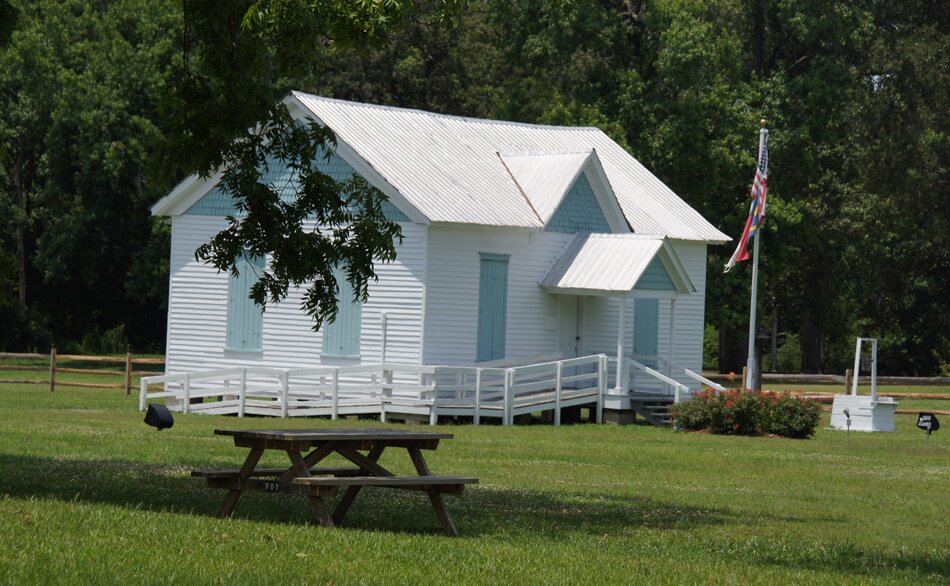
The Eagles School, a typical one-room schoolhouse, was built in 1903 near Fountain in Pitt County by the Eagles family for $400. The school contains two original desks and 12 pictures of some of the original teachers. These women could teach students from 6 to 16 years old. These sites became vital centers in rural communities for public meetings, political speeches, and voting stations.

This country store was located at Pactolus in Pitt County circa 1879, but it was purchased by the Satterthwaite family and became known as The Satterthwaite Store. These enterprising merchants had the first telephone, the first gas pump, and later the first post office in the area. The store closed in 1973.
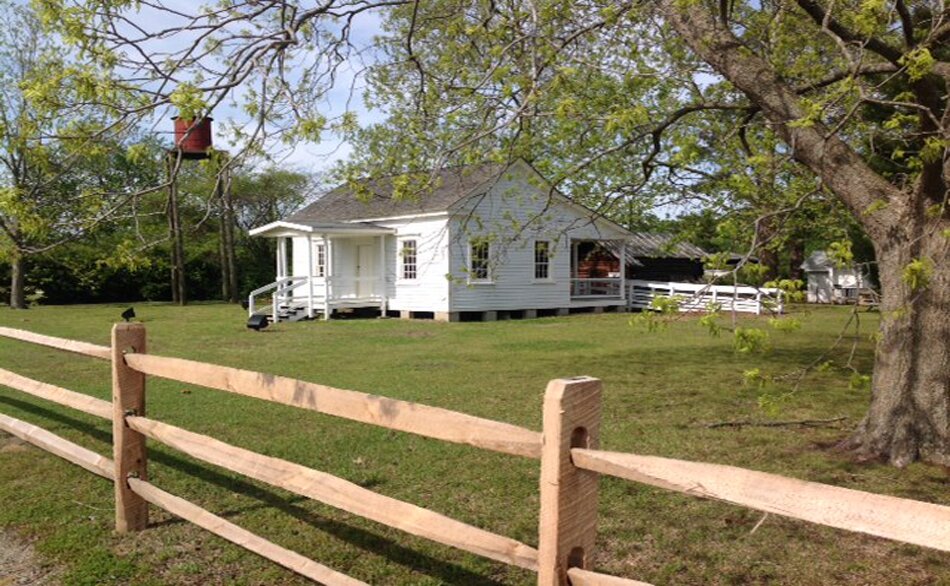
The Thomas Adrian Savage House was built in the mid-1850’s near Bell’s Fork in Pitt County. This house is a fine example of vernacular Greek Revival architecture and one of the the few remaining in the county. It represents an example of a home of a middle class farmer, while most Pitt County farmers in the 19th century were poor and lived in log houses.

The 1858 Log Corn Crib came from the Lottie Ellis home place on Old Tar River Road in Pitt County. It stands behind the Savage House as part of a collection of outbuildings typically clustered around a farm house. Corn was one of the most important crops grown by a farmer as food for the family and livestock.
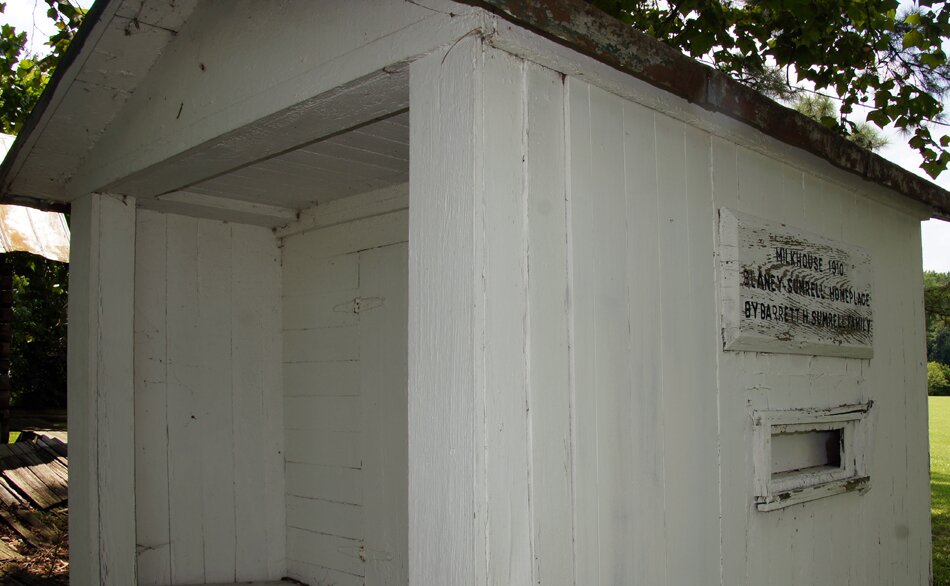
The Milk House, built about 1910, came from the Blaney-Sumrell home place. With no electricity, farming families would build milk houses and place them under a tree to keep the milk cool. Sawdust insulation helped, too. After the cream would rise to the top in the milk pan, a family member would skim it off and churn it into butter. Some families kept their milk suspended down a well to keep it cool.
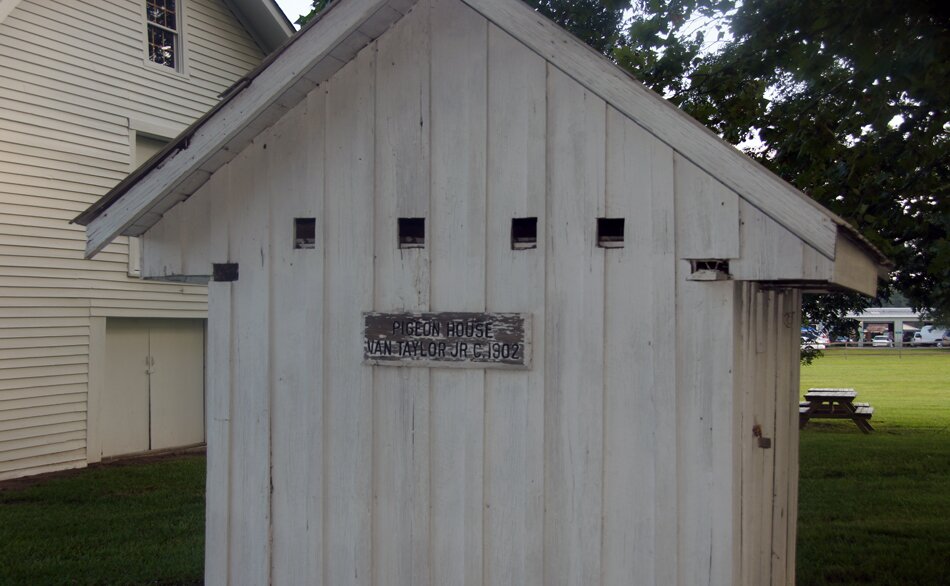
The Pigeon House was given by Van Taylor, Jr., and was built around 1902. Many families raised pigeons as an additional source of meat, eating squabs, or young pigeons.
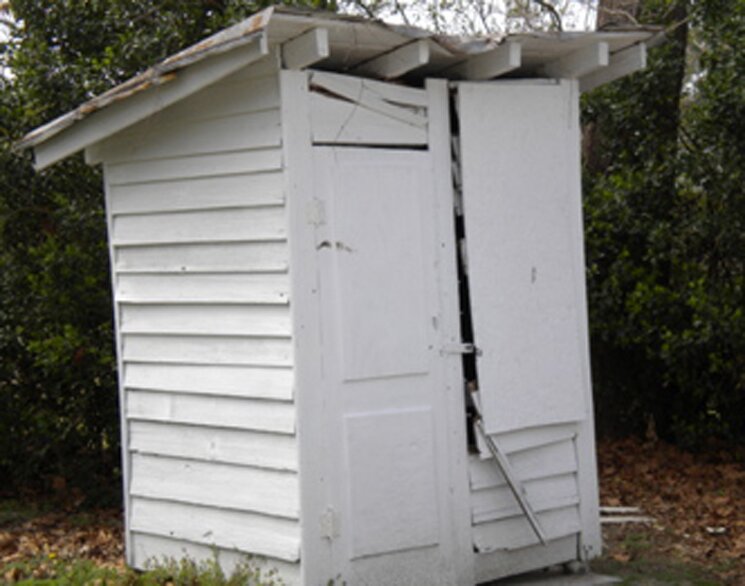
This Outhouse, or johnny house as it was known, has two holes, typical of what was found on farms in the early 1900’s.
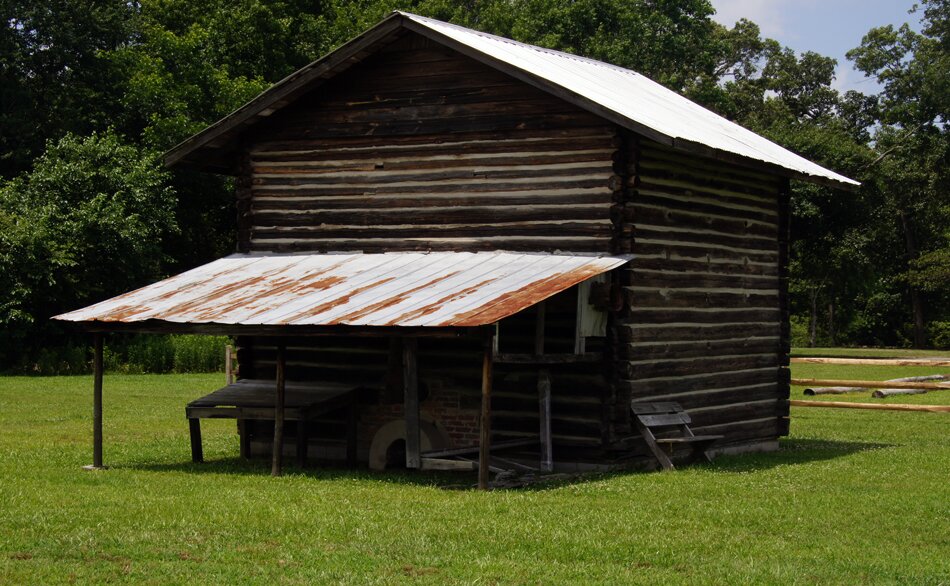
The Log Tobacco Barn, built in the 1890’s, was moved from the David T. House farm near Flat Swamp Church in Pitt County. This barn has one single furnace with flues around the inside. Someone stoked the fire and tended it at all times during the curing to prevent fires. A burned barn meant financial straits for the farm. Tobacco growing began in the late 1880’s, but the industry has declined greatly with very few modern metal barns in the rural landscape of eastern North Carolina.
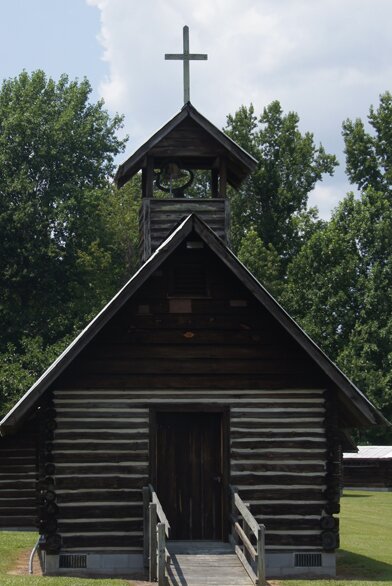
The Log Church was modeled after the Tyson’s Meeting House, a Primitive Baptist Church and the oldest standing church in Pitt County. The ceiling was constructed in a board and batten style and the rostrum is an exact copy of the church’s two rostrums. The hand hewn pews are original from the church, which was built in the late 1700’s. The flooring came from Milton May’s great grandfather’s house which was located at Ballards Crossroads in Pitt County.
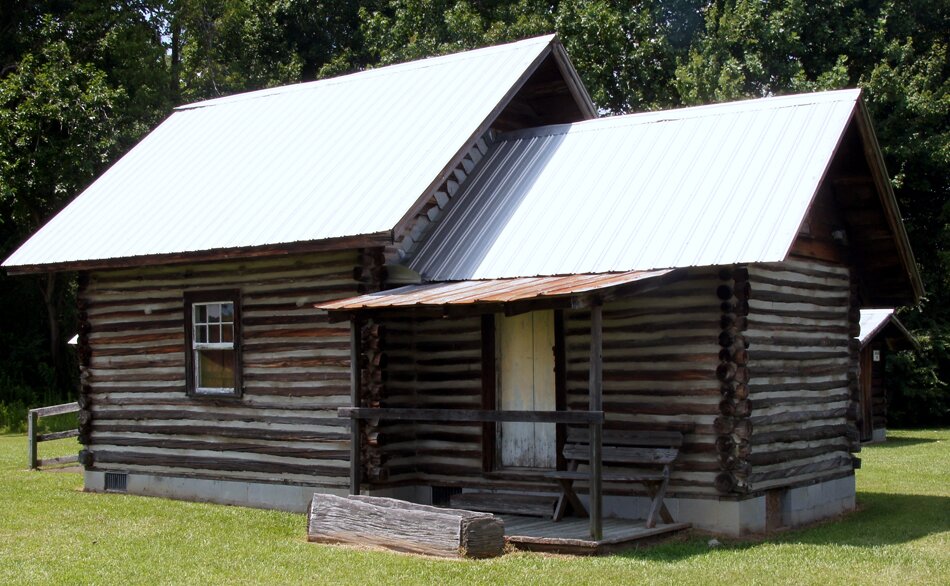
The Log Cabin was built with 150 year-old cypress logs from Jimmie Bright, who lived on the Jesse Cannon Farm. The cabin has a living/cooking area and a bedroom for the parents. The children would sleep in the attic. The mantel and flooring came from the ancestral home (circa 1800) of Lester Turnage, a co-founder of the Village. A corner cupboard was donated by the Hunsucker family from Winterville. A table and benches in the main room were made from benches from a church close to Arapahoe. A chest and clothes closet were donated by Connor Eagles, another co-founder of the Village.
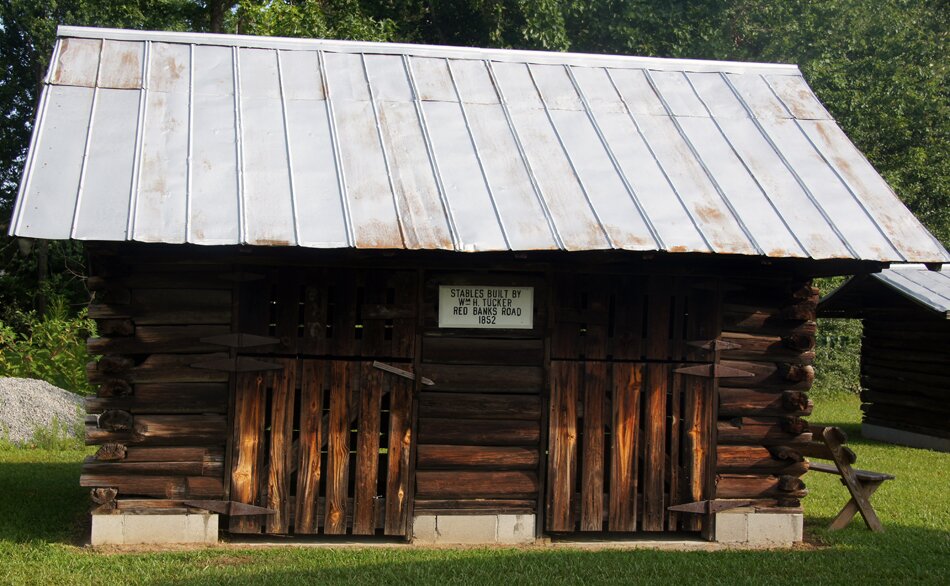
The Mule and Cowpen Stables were built in 1852 and came from the Tucker Farm off Red Banks Road. Above the two stalls is a hayloft, where hay was stored, and perhaps where children slept if there was not enough sleep space in the log cabin.
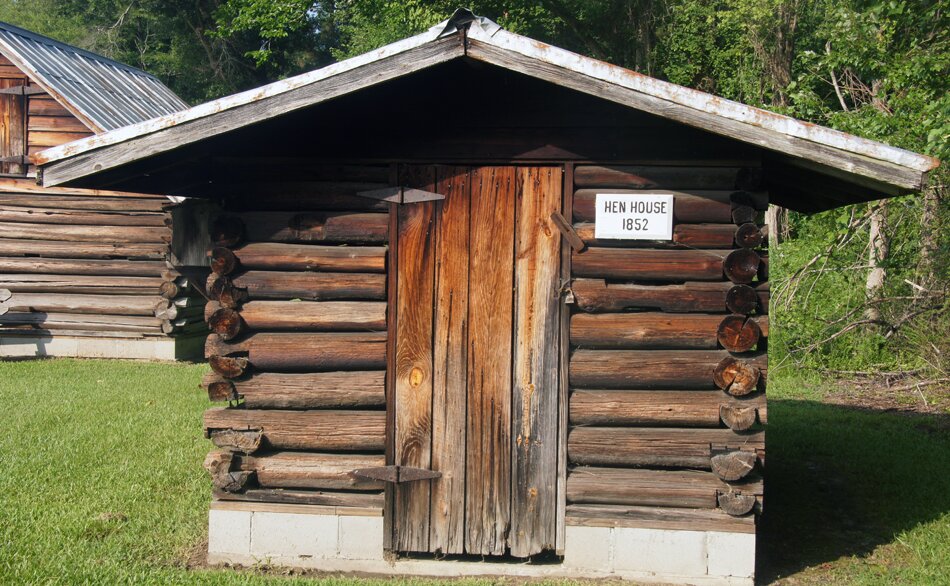
The Hen House dates back to 1852. It has a chicken roost inside, and attached to the side are cubby holes for the chickens to lay their eggs. At one time chickens ranked as a valuable commodity for farmers by providing eggs, which often were used in trade for needed supplies or food. Chicken and eggs boosted the farm family’s diet.
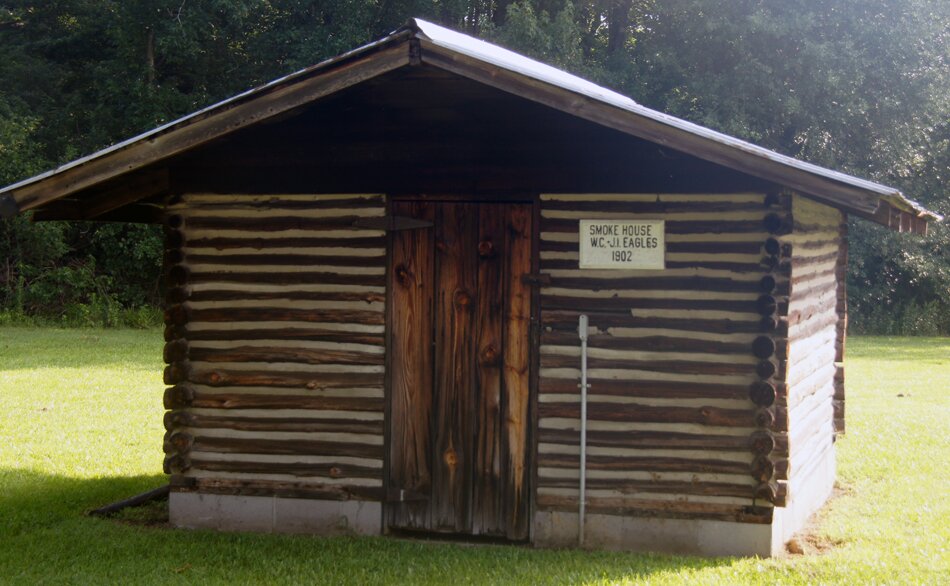
The Hooded Log Smoke House, built in 1902, was donated by Co-Founder Connor Eagles and his brother John Ivey Eagles. Before refrigeration, farmers cured all meat in a smokehouse. At a hog slaughtering, the farmer cut the pig into hams, shoulders, and other parts, put these portions into a salt tray and rubbed them down with salt until the blood was completely out. The farmer would hang these pieces from the rafters over a smoldering fire of hickory or oak. The Village’s salt tray is over 200-years-old.
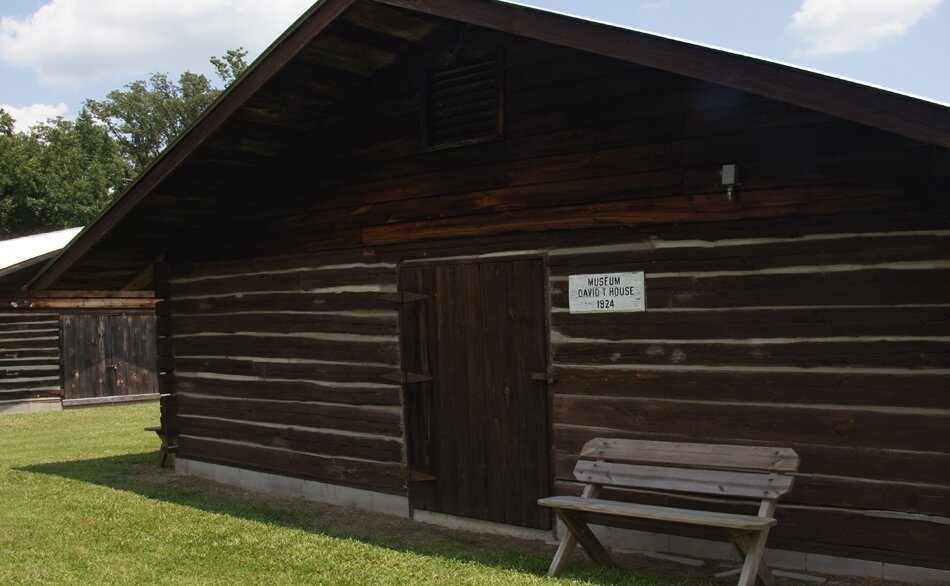
The David T. House Building contains the Village’s occupational artifacts, including old Daily Reflector printing presses, Greenville Bank safe, Drum’s Hatchery incubators, George Tyndall’s father’s tin brake and crimps, grist mills, office machines, and a 200 year-old hammered copper still from Gates County (donated by a Mr. Nixon), to name a few.
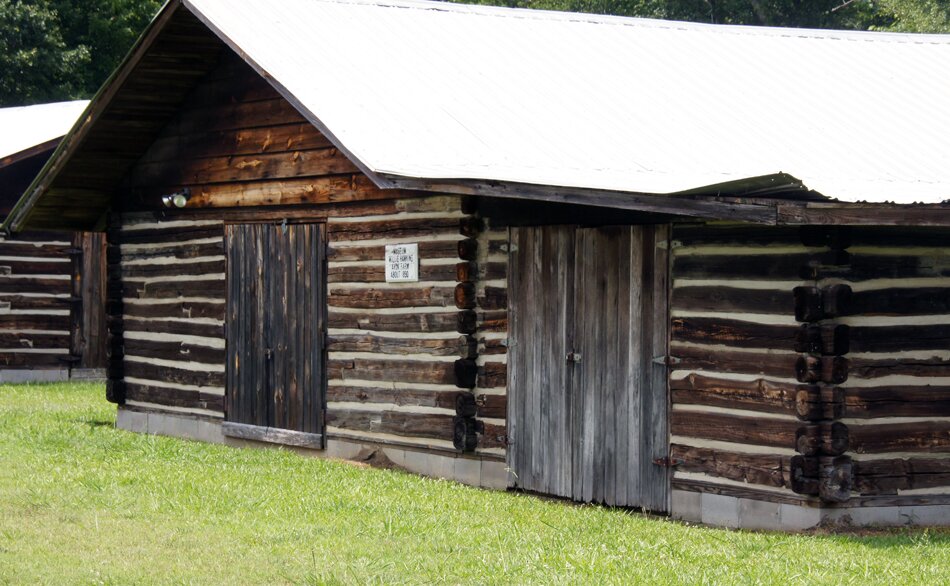
The Willie Hawkins Building came from Avon Farm and was made from tobacco barn logs circa 1890. It houses many of the Village’s small farm artifacts, such as cotton, bean and corn planters, as well as fertilizer spreaders. The building has numerous plows, hand tools, and the prize, a forty saw cotton gin dating back to 1856.
The Willie Hawkins Annex reflects the Village’s household artifacts, featuring a series of washing machines, the oldest being a large cast iron pot and a wooden washboard. The Annex also contains other kitchen appliances from a Home Comfort Stove to an icebox refrigerator.
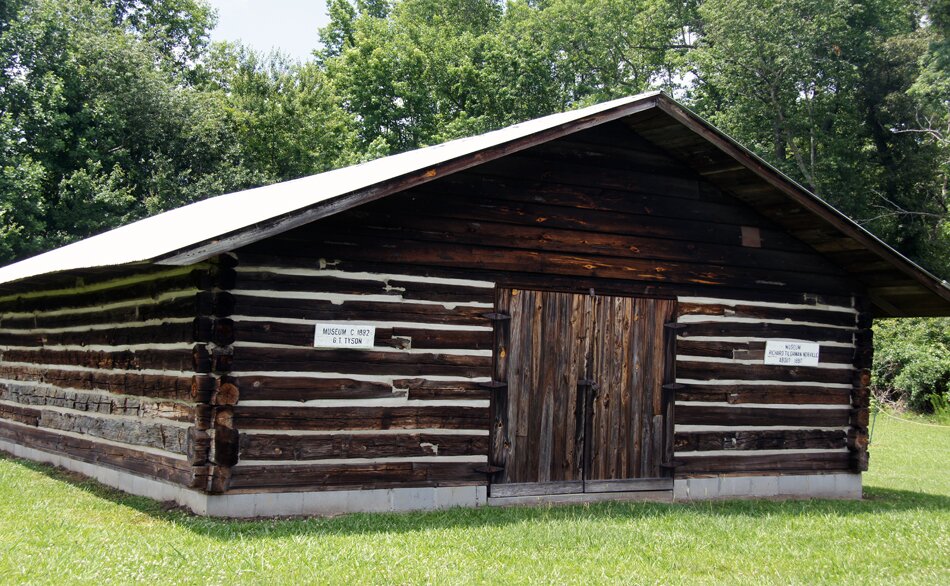
The G.T. Tyson and Richard Tilghman Norville Building contains the Village’s large farm machinery collection. Numerous corn shellers, seed cleaners, harrows, and a hay rake plow are on the floor, while a collection of hay cradles is attached to the walls.
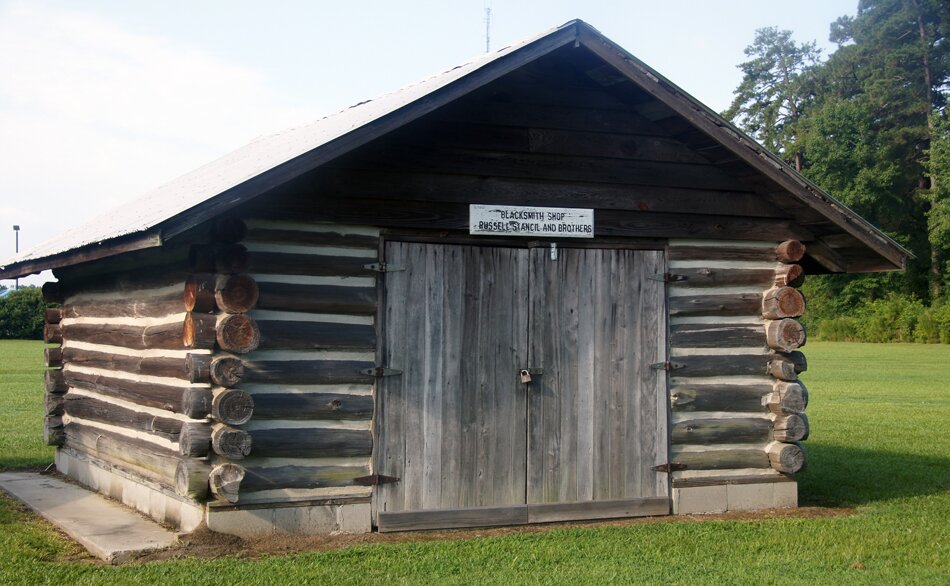
The Blacksmith and Tool Shop made from logs from the Russell Stancil Farm is not open at this time.
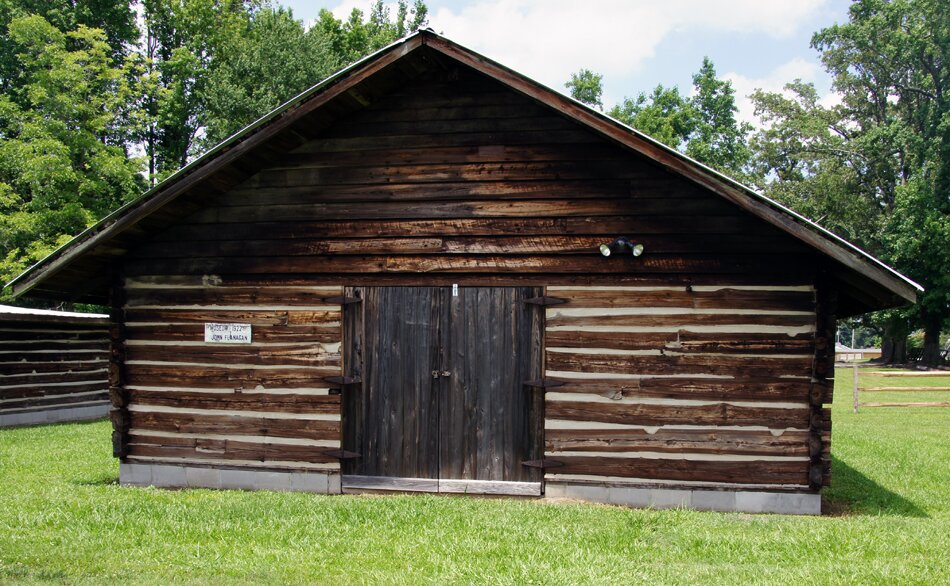
The John Flanagan Tobacco Building made from logs from the Flanagan Farm dates back to 1922. This building is not available at this time.
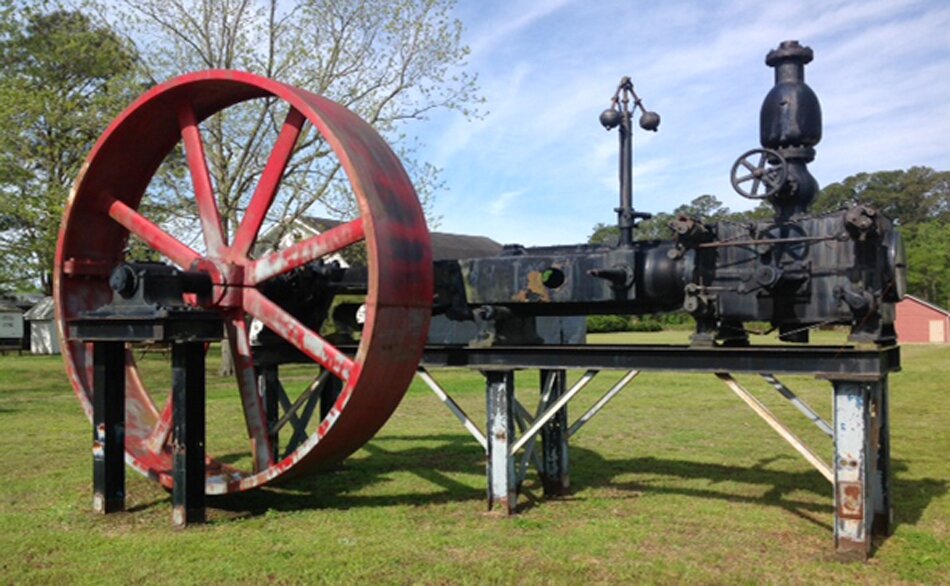
A Hamilton Sawmill Steam Engine stands at the front on the Village site. This 1915 piece of machinery provided energy to operate a lumber mill. Lumbering once was an important industry in eastern North Carolina.
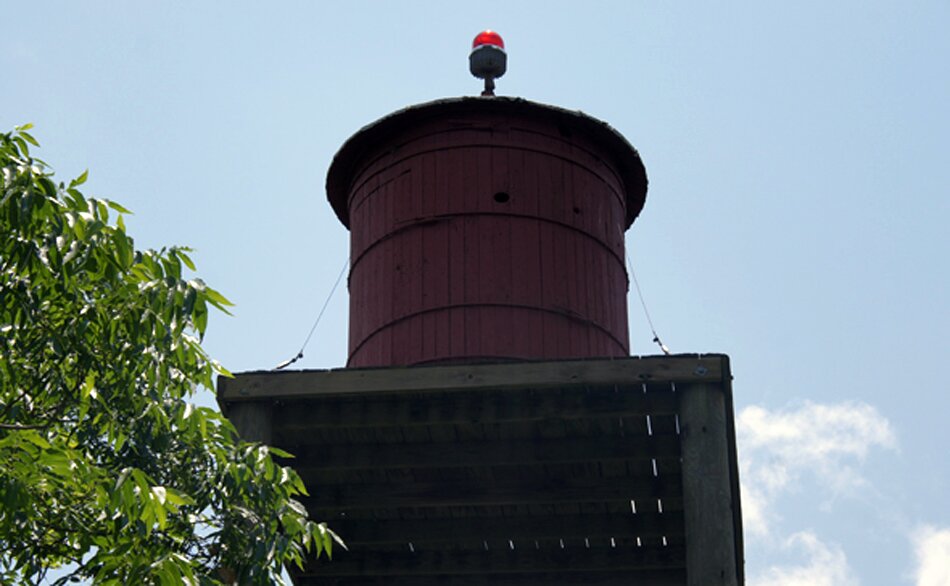
This Farm Water Tower, used in co-founder Lester Turnage’s old home in the 1920s, was powered by a gasoline engine that pumped water into this tank to give gravity fed running water into the second floor of the house. Other local farmers used windmills to pump water on their farms.